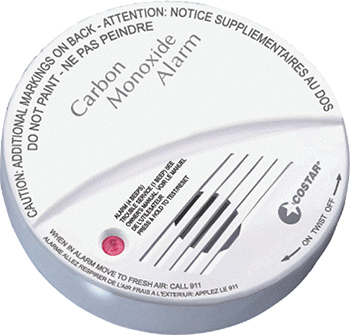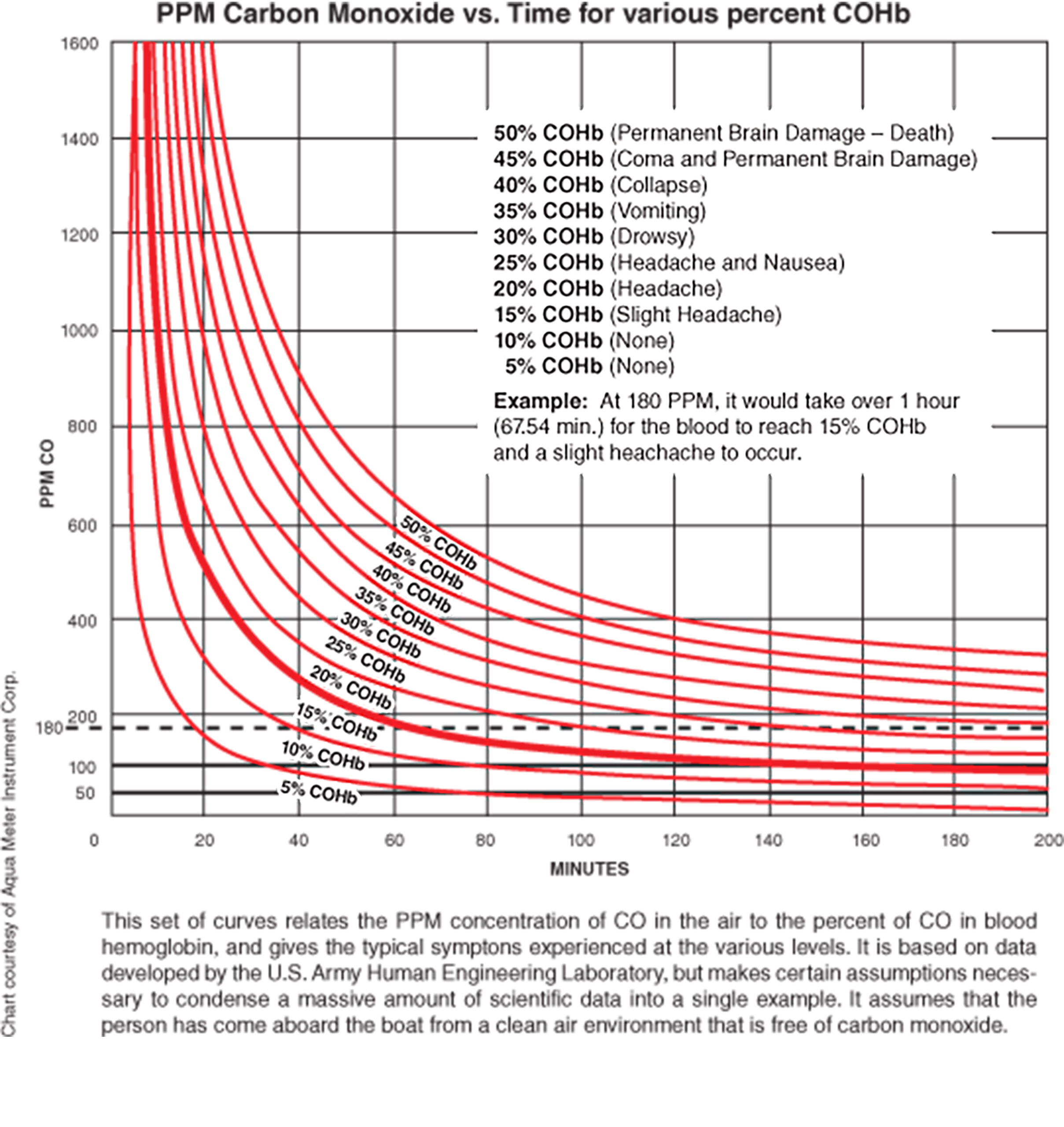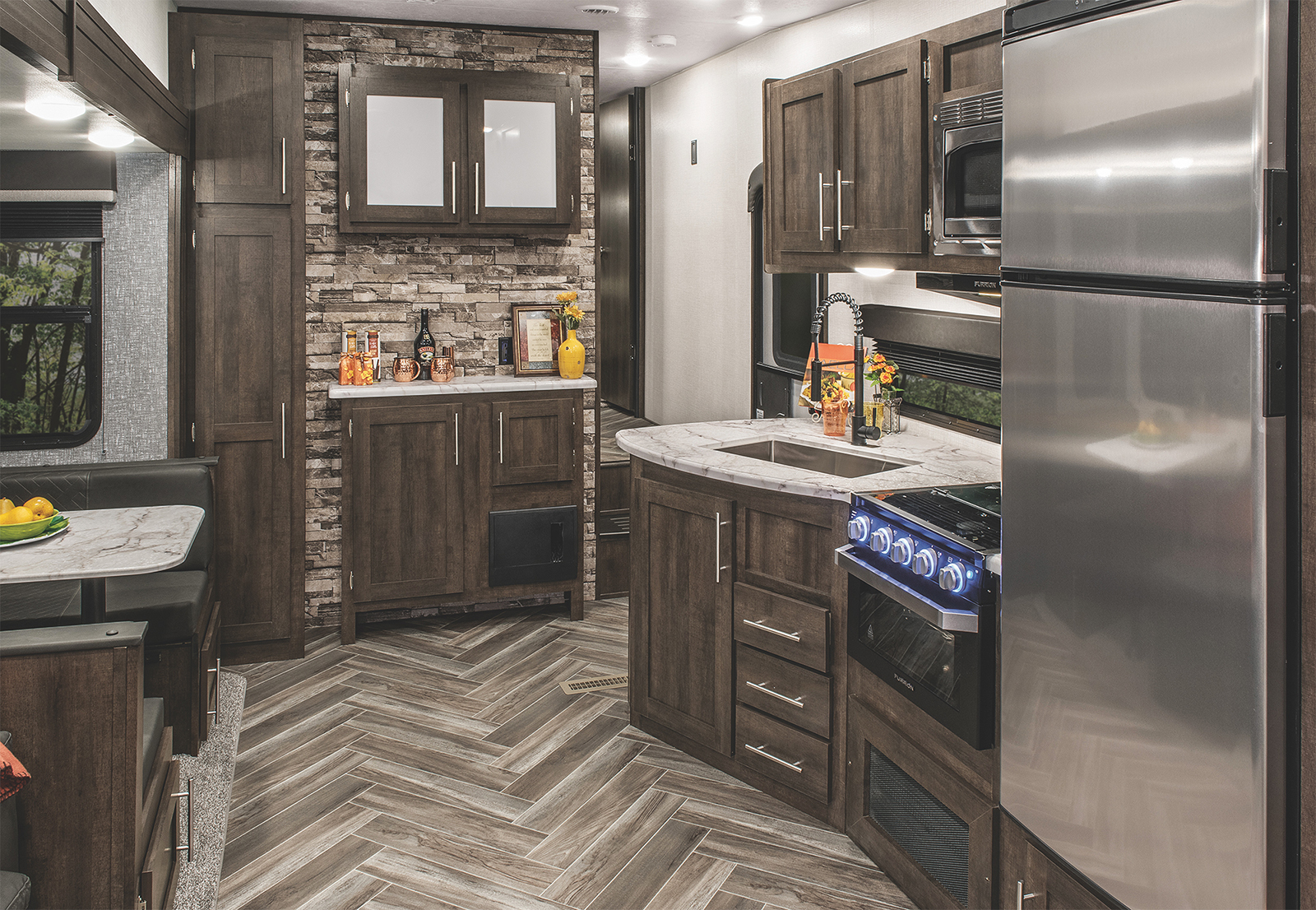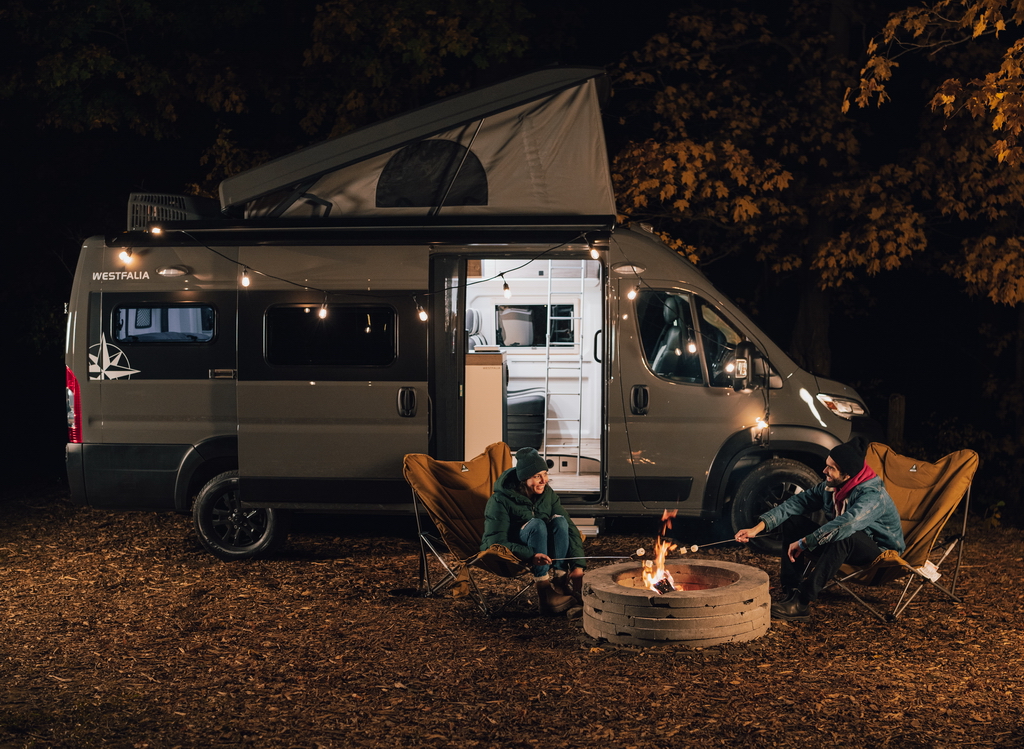CO detectors made for your RV.
By Garth Cane
The dangers of carbon monoxide poisoning are always present, and we should be aware of how it can affect us in our everyday life and in particular as RV’ers. Recently, a family was using their RV as additional sleeping room when they had extra company overnight. During the night, the father and one child got out of the RV when they felt dizzy and faint. Unfortunately, two other children did not wake up and succumbed to carbon monoxide poisoning.
Carbon monoxide is formed when fuel burns without enough oxygen present. The symptoms of carbon monoxide poisoning are often as silent and invisible as the gas itself – at first, you may notice a raspy, dry irritation in the back of your throat from the aldehydes that are produced. At moderate levels, you or your family can get severe headaches, become dizzy, mentally confused, nauseated, or faint. You can even die if these levels persist for a long time. Low levels can cause shortness of breath, mild nausea, and mild headaches, and may have longer term effects on your health. Since many of these symptoms are similar to those of the flu, food poisoning, or other illnesses, you may not think that CO poisoning could be the cause. Whenever we suspect that carbon monoxide is present, we need to open the doors and windows and get out immediately into the fresh air.
 Carbon monoxide is readily absorbed into the blood stream and reduces the amount of oxygen that flows to the brain. If you feel light-headed, out of balance, or lethargic, get to a source of fresh air as soon as possible, and open the windows in your RV – check on everyone in the RV with you – if they have symptoms, or if you suspect a carbon monoxide leak has occurred, don’t take chances – GO TO AN EMERGENCY ROOM and tell the physician you suspect CO poisoning. If CO poisoning has occurred, it can often be diagnosed by a blood test done soon after exposure.
Carbon monoxide is readily absorbed into the blood stream and reduces the amount of oxygen that flows to the brain. If you feel light-headed, out of balance, or lethargic, get to a source of fresh air as soon as possible, and open the windows in your RV – check on everyone in the RV with you – if they have symptoms, or if you suspect a carbon monoxide leak has occurred, don’t take chances – GO TO AN EMERGENCY ROOM and tell the physician you suspect CO poisoning. If CO poisoning has occurred, it can often be diagnosed by a blood test done soon after exposure.
The longer you are exposed to even low levels of carbon monoxide gas, the more it is absorbed by the hemoglobin of the blood stream. In the graph, you will see that high concentrations of the gas can cause severe trauma in a very short time.
If you don’t feel well or are dizzy, open the windows and doors and go outside.
Generators can produce exhaust gasses also and it is important to have the exhaust pipes extend sufficiently past the side walls or rear of the vehicle so that the prevailing air currents can disburse this gas away from the vehicle and not have it drawn into an open window or a crack in the floor. Furnaces, water heaters, refrigerators and generators draw their combustion air from the outside of the RV and any gasses that are produced are expelled to the outdoors. But often the exhaust gasses of other RV’er’s generators, water heaters, and furnaces that are nearby can be drawn in through an open window. Even though the exhaust pipe of your generator may clear the RV by several inches, often a wind can blow the gas back towards your RV where it can be drawn in. On our own RV we use a “Genturi” pipe that extends the exhaust up over the roof whenever we are parked near another RV so that the prevailing air currents can take it away.
The gas stove on the kitchen counter receives its combustion air from inside the vehicle and can burn up the available oxygen in the air causing a problem. It is important not to use a pot that is too large on a burner that might block the available air from feeding the flame. The stove should never be used to heat the interior of the RV on a cold day. Whenever the stove or a catalytic heater is in use, we need to crack open a rooftop vent or side window a small amount to allow fresh air to come in and replace the oxygen that has been burned off. Some new catalytic heaters have carbon monoxide detectors installed internally that will shut off the supply of gas if CO is detected. It is very important that the air supply to water heaters is adjusted properly to prevent the creation of carbon monoxide.
Above all, do not idle your car in the garage even with the door open, carbon monoxide can quickly fill the garage and seep into the rest of the house.
Have your fuel burning appliances checked at the beginning of each camping year to be sure they are properly vented and working well. Never use a charcoal grill inside the RV, and don’t sleep with the generator running.
 Alarm Placement
Alarm Placement
Smoke alarms are mounted on the ceiling since smoke rises. Propane detectors are mounted at floor level since propane is heavier than air. Carbon monoxide detectors should be mounted about five feet off the floor. If your detector goes off, open a window or door immediately to get some fresh air into the RV. Do not turn off the detector to stop the sound. Some low cost detectors cause false alarms, so be sure to obtain a quality unit and replace it every five years as the sensor can become flooded by other smells, and sprays. When a smoke detector goes off, you can easily see why it is screaming at you. Unfortunately, you cannot see or smell carbon monoxide so it is hard to tell whether it is a false alarm or a real emergency. Do not select a detector just on its cost. It may not be adequate to do the job that is necessary when the time comes. Look for a CSA or UL sticker on the alarm so that you are sure that it has passed minimum safety requirements
Common types of CO detectors are the Metal Oxide Semi-conductor (MOS) that uses heated tin oxide. When CO is present in the sensing chamber, it reacts with the tin oxide producing an alarm. Solid State Infrared (SIR) , (formerly known as Biomimetric), CO detectors use a gel-coated disc that darkens when CO is present. A photocell senses this change and turns on the alarm. These units are not susceptible to false alarms from disinfecting sprays, air fresheners, and dish detergents. Electrochemical CO detectors use a chemical reaction with the CO to create a small electrical current which will sound the alarm. Units used in RVs are normally powered by batteries. If you neglect to change the batteries at the start of the camping season, the alarm will do you no good. You need to test the unit regularly for proper operation by pushing the test button. New RVs that are built today must have carbon monoxide detectors installed at the factory, but unfortunately, there are many older RVs on the road that do not have this life-saving device installed. Go to your favourite dealer to have one installed in your RV.
Units built specifically for RVs and installed as original equipment by manufacturers include the COSTARZ by Quantum Group, and the Safe-T-Alert built by MTI Industries. COSTARZ makes a unit that operates from the vehicle’s 12-volt system and also makes a model that has an additional 9-volt battery backup. Both COSTARZ and Safe-T-Alert’s units are permanently wired into the coach’s 12-volt system.
I have seen many RV’ers using home style CO detectors that plug into a wall outlet. This means that they are powered when your unit is plugged in at a campground, but not when you are on the road. First Alert and Kidde manufacture models that are primarily intended for home use, and are plug-in style. The First Alert plug-in CO detector with battery backup has a digital display showing the concentration in parts per million and has a memory that stores the highest levels detected.
The Kidde combination smoke and CO detector has a loud voice alarm that notifies you if it is a smoke or carbon monoxide incident when the alarm is triggered. It has a button to silence the alarm sound. Kidde also manufactures a line of excellent fire extinguishers that should be carried in every RV.
Remember – it is always better to be safe than sorry – or dead!
For additional information visit the following websites:
Quantum Group – http://store.qginc.com/
MTI Industries – www.safe-t-alert.com






















